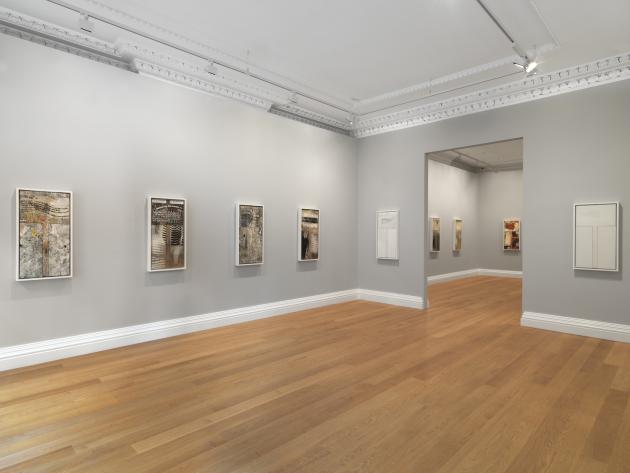Richard Prince’s Protest Paintings – brought together for his sixth exhibition at the Skarstedt Gallery, London – challenge both authority and authorship with a sense of irreverent badinage.
Richard Prince has used many methods in his career to date, but the mainstay of the artist’s entire oeuvre is appropriation. As the inventor of Re-photography in late 70’s New York; the artist would rephotograph existing images – often in advertising – and in doing so would re-contextualise them.
The artist stated film’s natural ability to appropriate, and therefore destroy original associations – it was effortless, and reckless – and included his famous series Cowboys; Re-photographs by the artist of Marlborough adverts. A dialectic between hyperrealism and authorship ensued – and eventually a failed copyright lawsuit.
In 1985 Prince began creating hand-written jokes on paper for exhibition. This was yet another act of appropriation, as the artist suggested: the art was in the re-telling. Prince realised his potential envy if another artist had thought of the idea first, and decided that this was the method that he wanted to be remembered for.
The hand-written paper gags gave way to monochromatic canvases with layered surfaces and the printing of garrulous one-liners; satirical and clichéd jokes with an intentional predictability.
But another change occurred to the artist’s work with Prince’s Protest Paintings, from 1986 to 1994, where events from the past would give socio-political meaning to the artist’s re-contextualised one-liners.
The Skarstedt’s Protest canvases are in sections; they are built, or re-built out of a jigsaw of components to constitute a standard painterly rectangle. This leaves the centre of the canvas similar to a slotted-in cruciform shape reminiscent of the form of a protest banner – This is at the centre of all of the paintings in the Protest Series.
This form is a powerful symbol of the right to free speech in an American democracy; especially in the era of Nixon, The Cambodian Campaign, and the student protest deaths at Kent State University – an era that heavily influenced the artist’s thinking and bled into his use of symbolism and appropriated text – having been accused of direct involvement in the demonstrations when he lowered the campus flag out of respect for the dead.
There is often a faint reveal of the American flag through the repeated use of its faded stripes – with traces of Jasper Johns, and a hint of the insubordination of Pollock – all are indicative of a weakened democratic state, and the state of democracy. As Prince has said: ‘The paintings are abstract… especially in Europe if you don’t speak English’.
The sectioned cruciform of the canvas is imbued with religious and political meaning as the cornerstones of American identity. Prince undermines ‘God and Country’ and invalidates its authority with the overlay of a humorous one-liner. Politicised graffiti over an abstract concept.
The joke also questions the importance of the ‘unique’ in art, through its languorous repetition. The clichéd, kitsch, and hackneyed repeat is in and of itself the joke. Prince’s repetition of certain one-liners on numerous canvases throughout his oeuvre provides a tone and leitmotif to the works. They also highlight the concept of hierarchy in art and society – simultaneously.
In appropriating the joke Prince de-contextualises it – in much the same way as Re-photography de-contextualised the image – and re-contextualises it against the cruciform symbolism of American values. The artist has also juxtaposed the ‘psychiatrist joke’ and American democracy on repeated occasions; the questioning of subjective perception in pseudo-democratic surroundings, in this, Prince is questioning the validity of the construct of values upon which social perception is built.
In fact this exhibition feels rather timely in nature; as Prince’s works continue to channel a healthy spirit of political defiance that was first engendered in the artist’s reaction to that embittered and partite landscape of early 70’s America. The resurgence of his Protest Paintings has achieved another moment of Zeitgeist juxtaposed with the current American political system and its covert appropriation of information en masse.
With Prince’s Protest Paintings; the political status quo is subverted and challenged – the very foundations of America become a canvas for a text; the American political system is the joke and America is the flat canvas stage on which it is told.
Richard Prince Protest Paintings, Skarstedt Gallery, London, 15th October – 20th December.
Words: Paul Black © 2013 Photo: courtesy Skarstedt Gallery, London

